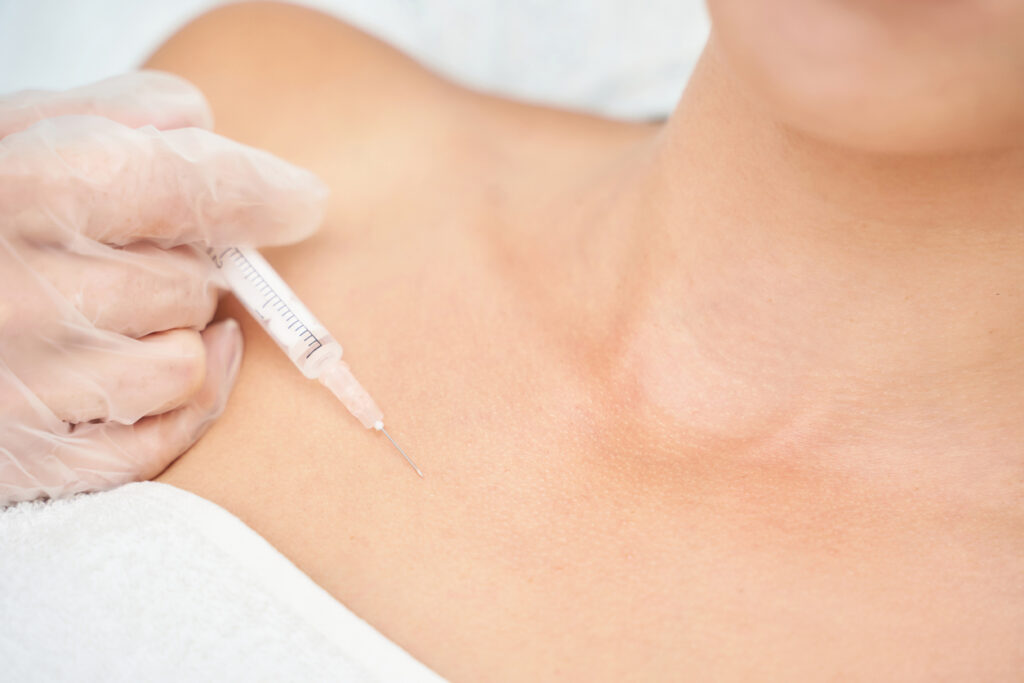KB301, an investigational aesthetic treatment designed to deliver the COL3A1 transgene and increase type III collagen (“COL3”) levels in the skin, improved lateral canthal lines and dynamic wrinkles of the décolleté, according to results from both Cohorts 3 and 4 of PEARL-1, a Phase 1 study.
Jeune Aesthetics, Inc., will be progressing KB301 into Phase 2 development for the treatment of dynamic wrinkles of the décolleté and will be meeting with the U.S. Food and Drug Administration in the coming months to enable initiation of the Phase 2 study.
“Today’s injectable aesthetics toolbox is limited to toxins and fillers which allow us to manipulate, but not rejuvenate, aging skin,” says Steve G. Yoelin, MD, an ophthalmologist in Newport Beach, CA, and one of the principal investigators for PEARL-1. “With its unique mechanism of action and compelling early efficacy data, I am excited by the potential for KB301 to change the treatment paradigm in the field of medical aesthetics and meet the growing demand for treatments that fundamentally replenish the skin or delay signs of aging.”
There were meaningful and sustained improvements in skin aesthetic attributes, assessed using a Global Aesthetic Improvement Scale (“GAIS”), reported by the study investigators and subjects in both the décolleté and lateral canthal regions. Increased subject satisfaction with wrinkle appearance was also reported using a Subject Satisfaction Questionnaire (“SSQ”).
Dynamic Wrinkles of the Décolleté Topline Efficacy Results
A total of 20 subjects were enrolled. Two subjects dropped out before completing KB301 treatments. The remaining 18 subjects were assessed for aesthetic improvement out to two months following KB301 injections in the décolleté region. Results included:
- Study investigators reported clinically meaningful improvement in wrinkles both one and two months after treatment, as assessed by GAIS:
- At two months: 94% of subjects had at least a one point improvement and 28% had a two point improvement – the maximum potential score on the GAIS scale.
- At one month: 83% of subjects had at least a one point improvement and 28% had a two point improvement.
- Subjects also reported improvements in wrinkles that increased from the first to second follow up month, as assessed by GAIS:
- At two months: 89% of subjects reported at least a one point improvement and 39% reported a two point improvement.
- At one month: 61% of subjects reported at least a one point improvement and 28% reported a two point improvement.
- 94% of subjects reported improved satisfaction with their wrinkles’ appearance two months after treatment, as assessed by SSQ.
- Improvements were also seen across multiple additional skin attributes, as assessed by GAIS, including crepiness, hydration, and radiance, for which investigators reported improvements of 1 point or better in 89%, 94%, and 94% of subjects, respectively, two months after treatment.
Lateral Canthal Line Topline Efficacy Results
A total of 13 subjects were enrolled. One subject dropped out before completing KB301 treatments. The remaining 12 subjects were assessed for aesthetic improvement out to two months following KB301 injections in the lateral canthal region. Results included:
- Study investigators again reported clinically meaningful improvement in wrinkles both one and two months after treatment, as assessed by GAIS:
- At two months: 75% of subjects had at least a one point improvement and 50% had a two point improvement.
- At one month: 92% of subjects had at least a one point improvement and 50% had a two point improvement.
- Subjects also reported improvements in wrinkles, as assessed by GAIS:
- At two months: 50% of subjects reported at least a one point improvement and 25% reported a two point improvement.
- At one month: 58% of subjects reported at least a one point improvement and 17% reported a two point improvement.
- 67% of subjects reported improved satisfaction with their wrinkles’ appearance two months after treatment, as assessed by SSQ.
- Improvements across multiple additional skin attributes were again reported, as assessed by GAIS, with investigators reporting one point or greater improvements in at least 75% of subjects for each of crepiness, hydration, and radiance, two months following treatment.
Across both cohorts, the KB301 safety profile was consistent with prior clinical experience in Cohorts 1 and 2 and other injectable aesthetic products. Adverse events were primarily injection associated, mild-to-moderate, and transient. No drug related serious adverse events were reported.
A subset of Cohort 4 subjects opted in to redose at the two month follow up timepoint, after completing the assessments described above. Additional data collection is ongoing in the redosed subjects.
Upon completion, detailed results of PEARL-1 Cohorts 3 and 4 will be presented at future scientific conference(s).


